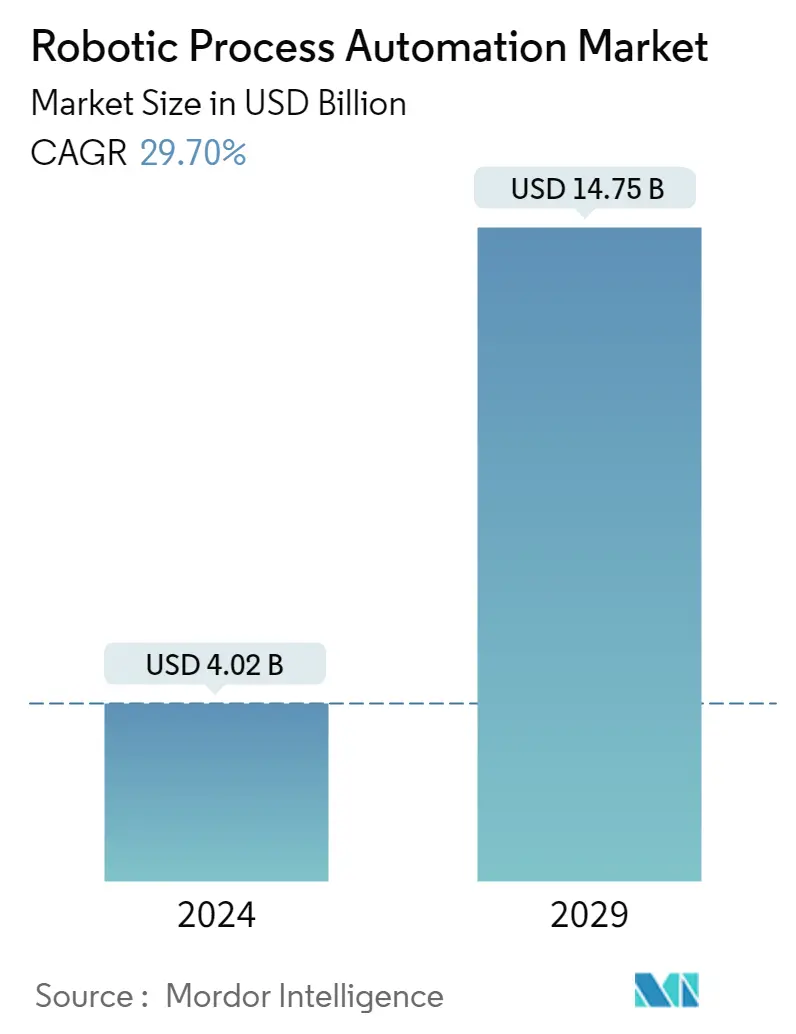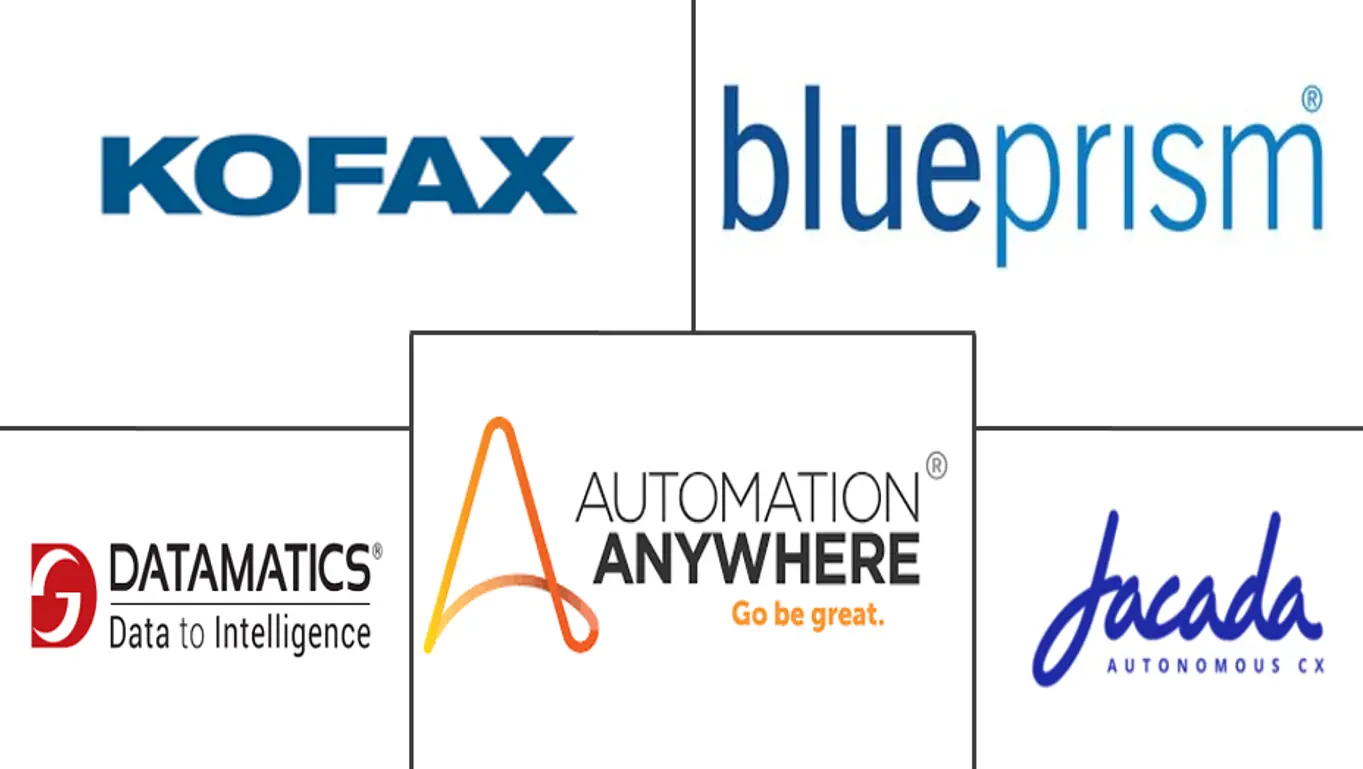Market Size of Robotic Process Automation Industry

| Study Period | 2021 - 2029 |
| Market Size (2024) | USD 4.02 Billion |
| Market Size (2029) | USD 14.75 Billion |
| CAGR (2024 - 2029) | 29.70 % |
| Fastest Growing Market | Asia Pacific |
| Largest Market | North America |
Major Players
*Disclaimer: Major Players sorted in no particular order |
Need a report that reflects how COVID-19 has impacted this market and its growth?
Robotic Process Automation Market Analysis
The Robotic Process Automation Market size is estimated at USD 4.02 billion in 2024, and is expected to reach USD 14.75 billion by 2029, growing at a CAGR of 29.70% during the forecast period (2024-2029).
RPA adoption is increasing across organizations of all sizes to generate greater Return on Investment (ROI) and boost productivity. Major market players are launching new Robotic Process Automation (RPA) solutions based on AI, machine learning, and cloud models to help meet the increasing demand.
- Robotic process automation (RPA), also known as intelligent automation or smart automation, is a general term for cutting-edge technologies that can be programmed to carry out a variety of tasks that previously required human intervention, such as data manipulation, setting off reactions, and establishing necessary communication with other processes and systems. Vendors in the market are also improving their products by including new capabilities like automation lifecycle management, workload management, SLA-based automation, credential management, and Citrix automation, in addition to new data APIs. These improvements are drawing in new sectors of industry that require more operational and security capabilities.
- The rising use of cutting-edge technologies like AI, machine learning, and the cloud will primarily fuel the robotic process automation market growth. More and more businesses are adopting RPA to automate business processes and handle increasingly complex data. Companies are developing and deploying cloud and AI-based RPA solutions to automatically optimize business processes and workflow. The increase in the adoption of Artificial Intelligence and cloud-based solutions for internal efficiency among SMEs is thriving the market growth. According to Vistage, among the 13.6% of SMBs leveraging AI, a significant share is using it to improve business operations, followed by customer engagement.
- The expanding use of SaaS, IaaS, and PaaS services for customer relationship management, cloud computing, enterprise resource management, open source resources, cooperative robot learning, network connectivity, and other financial applications is also creating a market for RPA solutions. RPA's functional advantages in various end-user industries, including IT and telecom, BFSI, healthcare, and retail, fuel the market's expansion. It is anticipated that the growing trend toward cloud-based solutions and the growth of robot-based solutions across a range of end-user industries will open up new potential for the construction of robotic process automation worldwide.
- RPA boosts output and revenue but also confronts risks that could cost millions. Two significant security threats associated with robotic process automation are data loss and theft. If the proper security measures are not in place, sensitive data, such as RPA bot passwords or consumer data handled by RPA, may be exposed to attackers, which could stifle the market.
- COVID-19 has negatively impacted the robotic process automation market and witnessed significant growth, owing to an increased usage of automated process automation solutions and increased social distancing norms, which will continue soon. Also, the human resource crunch observed by enterprises in industries is expected to further influence the adoption of RPA during the next two years, thus, driving the demand for such solution vendors. The industry continues to expand as software robots are used to manage regular tasks performed by temporary or seasonal workers and for staff peaks caused by regulatory spikes, new product launches, or new operations.
